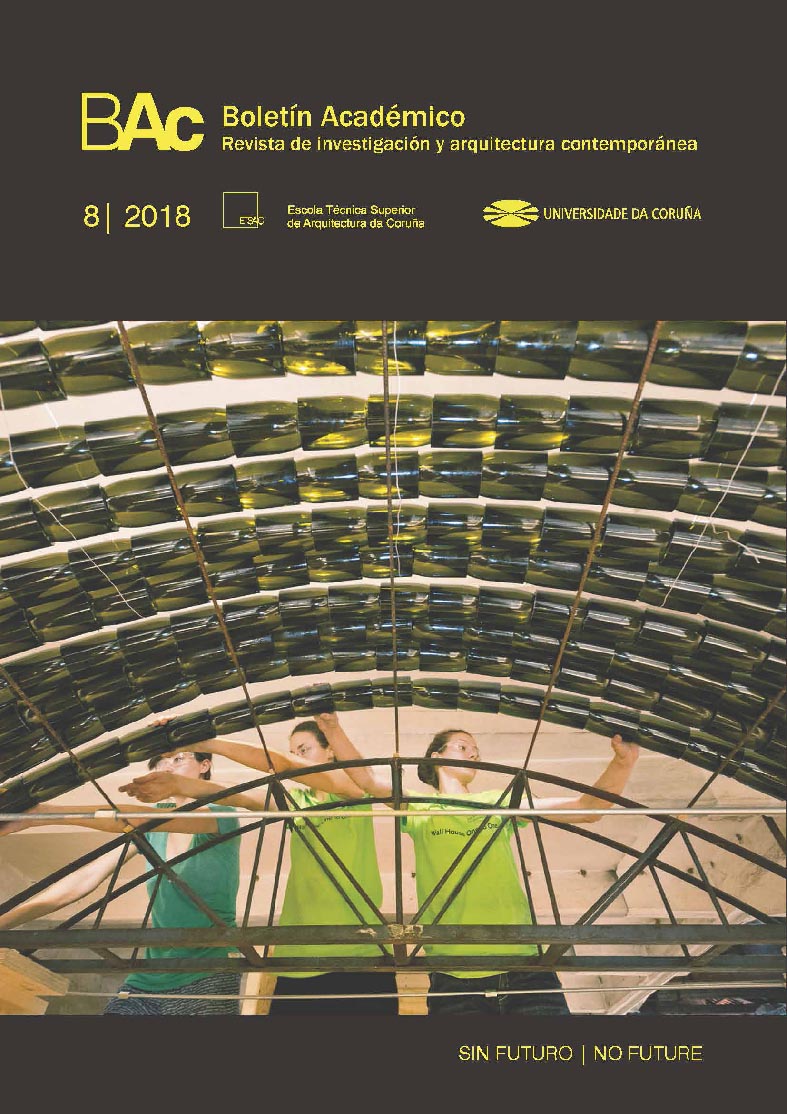If you want different results, do not do the same things. Govening bodies of Spanish architecture, 1931-1996.
Main Article Content
Abstract
Downloads
Article Details
References
Álvarez de Toledo Gross, Ricardo. “Los Colegios de Arquitectos y el trabajo profesional. Captación - reparto, defensa y creación.” Ponencia presentada en Congreso de Arquitectos de España, del 2 al 5 de noviembre, 1981.
Aroca, Ricardo. ¿Para qué servimos los arquitectos?. Madrid: Los libros de la catarata y Fundación Arquia, 2016.
Bowley, Arthur Lyon. An elementary manual of statistics. Lóndres: P.S. King & Son, 1882.
Comisión de actividad profesional y visado. “Análisis estratégico del campo de actividad profesional del ingeniero de Caminos, Canales y Puertos.” Informe, Colegio de Ingenieros de Caminos Canales y Puertos, 2008.
Comisión Nacional de la Competencia. “Informe sobre los Colegios Profesionales tras la transposición de la directiva de servicios.” Informe, CNC, 2015.
Doxiades, Kōnstantinos Apostolou. Architecture in Transition. Nueva York: Oxford University Press, 1974.
Frampton, Kenneth, y Cava, John. Studies in Tectonic Culture: The Poetics of Construction in Nineteenth and Twentieth Century Architecture. Cambridge, Mass.: MIT Press, 1995.
Fuentes Navarro, María Candelaria, Contreras Becerra, Javier y López Chaves, Pablo (eds.). “La depuración franquista de los colegios de arquitectos, 1939 – 1942”. II Encuentro de Jóvenes Investigadores en Historia Contemporánea. Granada: Editorial Universidad de Granada, 2010.
García, Gonzalo. “Informe sobre la situación profesional del arquitecto.” Informe, Centro de Asesoramiento Tecnológico COACYLE, 2010.
García Gener, Paloma. “La docencia de la ETSAM en su contexto histórico 1844 – 2015.” Trabajo fin de grado en Arquitectura, Politécnica de Madrid ETSAM, 2016.
García Morales, Mariano. 75 Aniversario del Colegio Oficial de Arquitectos de Madrid. De la Sociedad Central de Arquitectos al Colegio de Arquitectos de Madrid: Un largo camino. Madrid: COAM, 2001.
González Enciso, Agustín. “Los gremios y el crecimiento económico.” Memoria y civilización. Anuario de historia, nº 1 (1998): 111-137.
Guijarro, Sergio. ”En 1985, el 60 por 100 de los arquitectos ganó menos del salario mínimo.” ABC, 9 abril de 1986.
Luque, Emilio. “Informe sobre el estado de la Profesión 2009.” Informe, Consejo Superior de Colegios de Arquitectos de España y Arquia Caja de Arquitectos, 2009.
Mármol, Carlos. “La batalla sin cuartel del COAS.” carlosmarmol.es (blog). última modificación 24 de mayo, 2017. http://www.carlosmarmol.es/la-batalla-sin-cuartel-del-coas/
Martín Moreno, Jaime, y De Miguel, Amando. Los arquitectos en España. Estudio sociológico de la profesión. Madrid: Hermandad Nacional de Previsión Social de Arquitectos Superiores, 1976.
Morris, Alexander; Saunders, Carr y Alexander, Wilson Paul. The professions. Oxford: Clarendon Press, 1933.
Parsons, Talcott. “Las profesiones y la estructura social.” En: Halperin Donqui, Tulio (Ed.). Ensayos de teoría sociológica. Buenos Aires: Paidos, 1967: 34-47.
Rodríguez Graciani, Miguel Ángel. “La función social del arquitecto. Crisis de identidad.” Ponencia presentada en Congreso de Arquitectos de España, del 2 al 5 de noviembre, 1981.
Sennet, Richard. El Artesano. Barcelona: Anagrama, 2009.
Sindicato de Arquitectos. “II Encuesta situación laboral de los arquitectos.” Informe, SARQ, 2011.
Thorn, Robert. V. Statistical indicators for the economic and social sciences. Cambridge: Cambridge University Press, 1993.
Vergés Escuín, Ricardo. “El porvenir económico del arquitecto.” Informe, UNESCO / UIA, 1980.



